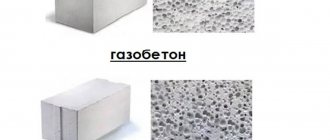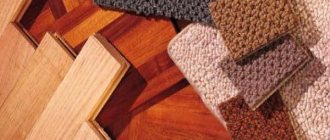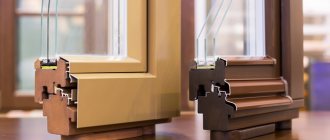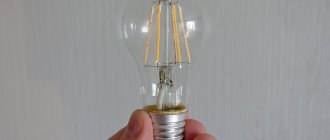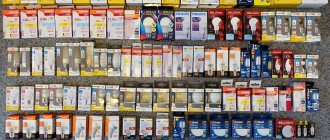From the author: Hello, our dear readers! Many times I have seen debates on the Internet about what material is best to build residential buildings from. As a rule, in such cases, some of the debaters are in favor of various derivatives of cellular concrete, in particular, foam blocks and aerated concrete, and the opposition diligently holds a flag with the image of familiar bricks.
As a rule, such discussions lead to nothing but sighs of regret that it is impossible to combine these types of building materials to get the ideal option. Although this sadness has absolutely no basis. To prove this, today I will tell you about one of these materials - expanded clay concrete blocks.
The characteristics that distinguish expanded clay concrete blocks make the use of this building material optimal in many cases. In fact, this is exactly that dream come true - something between bricks and cellular blocks, incorporating the advantages of both varieties.
So, let's take a closer look at what kind of material it is, what it is made of and what properties it has.
How is expanded clay concrete made?
Expanded clay concrete is a material that is classified as lightweight concrete. The main difference from concrete is the use of expanded clay as a filler. This material consists of baked clay balls ranging in size from 5 to 40 mm. It is characterized by low weight, porosity, and has sound-proofing and heat-insulating qualities.
The components of expanded clay concrete are
- cement;
- expanded clay;
- sand;
- water.
Production is based on mixing ingredients in certain proportions. First, dry elements are mixed in a hopper, to which water is added. The mixture is brought to a plastic state and poured into molds. They are placed on vibration installations to compact the mixture. After this stage, the resulting blocks are kept in air to gain strength for 28 days.
In production, M400 cement is used, which ensures the production of a material of a given strength. The ratio of components depends on the strength grade; it is determined by regulatory documents. For example, to produce expanded clay concrete grade M250, 400 kg of cement, 720 kg of expanded clay, 640 kg of sand are used per 1 m3 of mixture.
An important characteristic of the material is density, which ranges from 300 to 1700 kg/m3. Elements with a low index are used as insulation. The characteristics of expanded clay concrete blocks depend on the ratio of cement and expanded clay in the concrete mixture. The smaller the first component, the lower the strength of the blocks and the higher the thermal insulation properties.
Important!
The production of expanded clay blocks for house construction is carried out on the basis of technological documentation developed in accordance with the requirements of GOST 33126-2014.
Calculation of wall thickness with insulation
Such calculations will differ from the classical formula. Because you need to take into account the heat transfer resistance of each material separately, then add them up and compare them with standard numbers. For example, we take the city of Yekaterinburg. The thickness of the walls in the Ural region will be much greater. Calculation of the normalized heat transfer resistance Dd is equal to 6000, to maintain the temperature inside the house equal to 20 degrees C. Calculation formula:
Rreg = a ? Dd + b = 0.00035 ? 6000 + 1.4 = 3.5
If the thickness of expanded clay concrete walls is 60 cm, with added 10 cm of insulating building material they will meet the general requirements. The same principle is used to calculate various combinations of building elements.
If you wish, you can save on expanded clay concrete; for this, it is recommended to take 40 cm blocks and 1.2 cm insulation for laying.
Pros and cons of expanded clay concrete blocks
Advantages of using expanded clay concrete blocks for building a house:
- strength;
- low thermal conductivity;
- frost resistance;
- fire resistance;
- durability;
- resistance to temperature changes and chemicals;
- environmental Safety;
- small mass of the block, which leads to a reduction in the load on the foundation and a reduction in the cost of its construction;
- speed of execution of work using expanded clay concrete blocks during the construction of a house;
- long service life of buildings;
- low price of blocks, leading to a reduction in the estimated cost of construction;
- ease of installation and finishing of expanded clay block surfaces.
Flaws:
- ability to absorb moisture;
- the need to plaster or finish surfaces with waterproof material;
- the thickness of products for outdoor placement is 20 cm, which is inconvenient from the point of view of determining the thickness of the wall of a house for specific climatic conditions;
- the presence of a large number of masonry joints when laying expanded clay blocks makes it necessary to insulate the facades.
Despite its shortcomings, the material has been used in the construction of low-rise buildings for decades, during which user reviews recommend this material for the construction of load-bearing walls and partitions.
Main disadvantages
The disadvantages of expanded clay concrete blocks include the following characteristics:
- the need to use facing materials;
- fragility, requiring care during transportation, installation and handling;
- the impossibility of constructing facilities in regions with high levels of humidity, since due to porosity and temperature fluctuations, the expanded clay block will collapse before its expected service life, or it will be necessary to provide a high level of waterproofing;
- It is prohibited to use blocks to lay a monolithic foundation;
- the appearance of cold bridges in joints requires the use of blocks with precise geometry and high-quality cement-sand mortars;
- buildings must be heated during the cold season to prevent freezing.
How to reduce the influence of negative factors?
If negative factors are critical, then you should not refuse to choose expanded clay concrete for the construction of facilities. There are several methods to reduce their influence:
- if it is necessary to install hydro- and heat-insulating materials, ventilated facades should be formed, which will ensure sufficient air exchange and prevent the accumulation of moisture inside the expanded clay block, accordingly, the likelihood of freezing will be minimized;
- when constructing buildings from 2 floors and above, it is necessary to frame the walls, as well as laying reinforcing metal mesh every 3-4 rows;
- a one-story building can be built half the width, but with insulation, thus reducing construction costs by 30-40%.
Types of expanded clay blocks by purpose
According to their purpose, they are divided into 3 types:
- Structural. The composition of the mixture for their manufacture is distinguished by a large amount of cement component, which gives the blocks strength. Density ranges from 1000 to 1700 kg/m3. Expanded clay blocks for construction can withstand significant loads; they are used in the construction of load-bearing external walls.
- Thermal insulation. They use coarse filler, which has low strength and high thermal insulation. The density of the blocks is from 300 to 900 kg/m3. They are used as insulation in the construction of facades and roofing.
- Structural thermal insulation blocks. With a density from 700 to 1400 kg/m3 they can be used for building enclosing structures and insulating surfaces.
Structurally, blocks are divided into solid and hollow. The former are used for the construction of external walls of a building, the latter have holes, are distinguished by increased insulation parameters, and are used for constructing partitions and insulation.
Specifications
In addition to the size and classification by intended use, the technical characteristics of expanded clay concrete blocks should be taken into account.
Strength
Strength is measured in kg/cm2. It depends primarily on what kind of filler was used in the manufacture of the material. The smaller the fractions, the higher the density (and with it the strength), and vice versa. The result is a fairly wide range of density values: 500–1800 kg/m3.
The range of strength indicators, accordingly, is also very wide: 35–250 kg/cm2. It is clear that the higher these indicators, the more suitable the material is for use in the construction of critical structures.
Thermal conductivity
The ability to retain heat in a room directly depends on the density of the material. The fact is that the presence of air in the structure is important for this. There are very few air bubbles in a dense block, which means the thermal conductivity is quite high.
The lowest, that is, the best thermal conductivity indicators are inherent in hollow options. In fact, they are more often used as thermal insulation rather than for structural work.
Frost resistance
Frost resistance of building materials is a very important factor. It is she who can directly influence its destruction. The frost resistance indicator means how many cycles of freezing and thawing a material can withstand before it begins to deteriorate.
To determine this indicator, studies are carried out in the laboratory, where the corresponding conditions are simulated. Depending on how soon the structure of the material begins to collapse under the influence of temperature changes, it is assigned a certain marking.
This indicator is designated by the letter F and a number that corresponds to the possible number of freezing and thawing cycles. For expanded clay concrete blocks, the range of frost resistance values is possible from 25 to 75. The higher the number, the longer the material will last.
Fire resistance
Another quality borrowed from bricks. In principle, foam blocks and gas blocks also have good performance. But expanded clay concrete is significantly ahead of them; it is able to withstand direct exposure to flame for 7–10 hours.
That is, that is how long the wall will maintain its integrity. As a rule, this is enough for the fire brigade to arrive and put out the fire.
Vapor permeability
If earlier this parameter was not taken into account much, now developers are increasingly focusing on it as one of the main ones. Vapor permeability is the ability of walls to “breathe”. Expanded clay concrete does this just fine, twice as good as regular brick.
This also includes the ability of the material to normalize the microclimate in the room. How does he do this? It's simple. If the air in the house is oversaturated with moisture, the material of the blocks will absorb the excess and release it outside.
If, on the contrary, the air is dry - this happens especially often during the heating period in winter - then expanded clay concrete will bring the missing amount of moisture from the street. Thus, the microclimate will always be in order, which is very important for the health and well-being of the residents of the house.
Soundproofing
The sound insulation characteristics of expanded clay concrete are quite good. But, as in the case of thermal conductivity, the presence of air in the structure of the material plays a role here. Therefore, hollow blocks are a much better sound insulator than solid ones.
Dimensions of expanded clay concrete blocks
The sizes of the blocks are regulated by the state standard, depend on the purpose and are equal to:
- for external walls, the typical length can be 30, 40cm, width 30, 20cm, height 20cm;
- for internal walls and partitions, the length is 60, 40, 20 cm, width 9, 12 cm, height 20 cm.
On a note!
The size 40x20x20 cm is most widespread among builders. The dimensions of the blocks are taken into account when designing the structure; they give an understanding of the required amount of material.
Load-bearing wall thickness
External walls that carry loads are built from wall panels. Structural blocks are used for the construction of any type of floors; there are no restrictions on performance properties. If structural and thermal insulation products are used, in individual cases it is possible to install an armored belt in the place of the upper rows of masonry and the ceiling. This technique will allow you to evenly distribute the load.
The thickness of the walls for bathhouses and garages allows the construction of reinforced concrete floor slabs. For such work, special construction equipment is needed.
The thickness of the masonry of load-bearing walls made of expanded clay concrete for 2- and 3-story buildings should be at least 40 centimeters. These are the most suitable dimensions for the construction of external walls where reinforced concrete floors will be built.
Expanded clay blocks for building a house – which ones are better?
To determine which expanded clay blocks are best used for building a house, you should first pay attention to the manufacturer. Producing blocks in artisanal conditions does not allow one to accurately observe the dosage of ingredients for preparing the mixture, to qualitatively mix and compact the components, and to bring the finished material to the required strength. Such blocks will have the lowest price on the market.
High-quality material will allow you to build a house, following construction technology, and ensure its long-term operation without repairs. Quality must be confirmed by the presence of a batch of goods with a certificate of compliance with the requirements of regulatory documents, which serves as proof of compliance with the manufacturing technology.
Calculation example
To calculate the optimal thickness of expanded clay concrete walls, you need to know the functional purpose of the building. If we take into account the regulations of building codes and regulations, it turns out that the width must be taken into account with the insulating material and be at least 64 centimeters.
Walls of this thickness are suitable for residential premises. To correctly calculate the consumption of the required building materials, you need to take into account the total indicators of all the walls that will be built in the building with all partitions and floor heights.
All indicators need to be multiplied. They also take into account the approximate thickness of the cement mortar for the screed and seams, approximately 15 cm. The resulting number should be multiplied by the thickness of the wall, and then divided by the volume of expanded clay concrete panels.
The result will be the required number of products needed for the construction of walls. The approximate cost is calculated as follows: the number of blocks is multiplied by the price of 1 product, then you need to add the cost of purchasing thermal insulation building materials.
Features of choosing expanded clay concrete blocks
When choosing expanded clay concrete blocks, experts recommend paying attention to the following points:
- identical geometric dimensions of the product batch;
- no chips or cracks;
- dark gray color guarantees product quality.
Photos of the built houses characterize them as reliable, durable and durable objects. To get a good result, it is recommended to carefully choose the manufacturer of the material. The quality of the blocks can guarantee long-term operation of the house.
More about sound insulation
Those who deal with the design of construction projects are constantly faced with the peculiarity of the technical specifications from the customer, which stipulates the issue of sound insulation of the room. For some reason, private developers do not consider this issue a priority. And in vain.
The lack of good sound insulation in rooms, especially between neighboring apartments, during the subsequent operation of the facility significantly poisons life, giving rise to conflicting relationships between family members and neighbors.
To avoid such situations, experts recommend installing a layer of expanded clay on the floor to reduce audibility. And don’t forget about the walls.
The indicators of sound insulation characteristics of enclosing structures determined by GOSTs are determined for each, taking into account their purpose on the basis of SNiP.
For a wall this value is 50 - 62 dB, for a partition - 41 - 50.
Measurements were experimentally carried out using Mayer's method using the Durgamer-Kammerer acoustic diagram, which showed that walls forty centimeters thick, made of expanded clay concrete block material, have a sound insulation value of 63.5 dB.
By purchasing such material, you will receive excellent sound insulation performance and will be able to use the room without worrying about excess noise.
